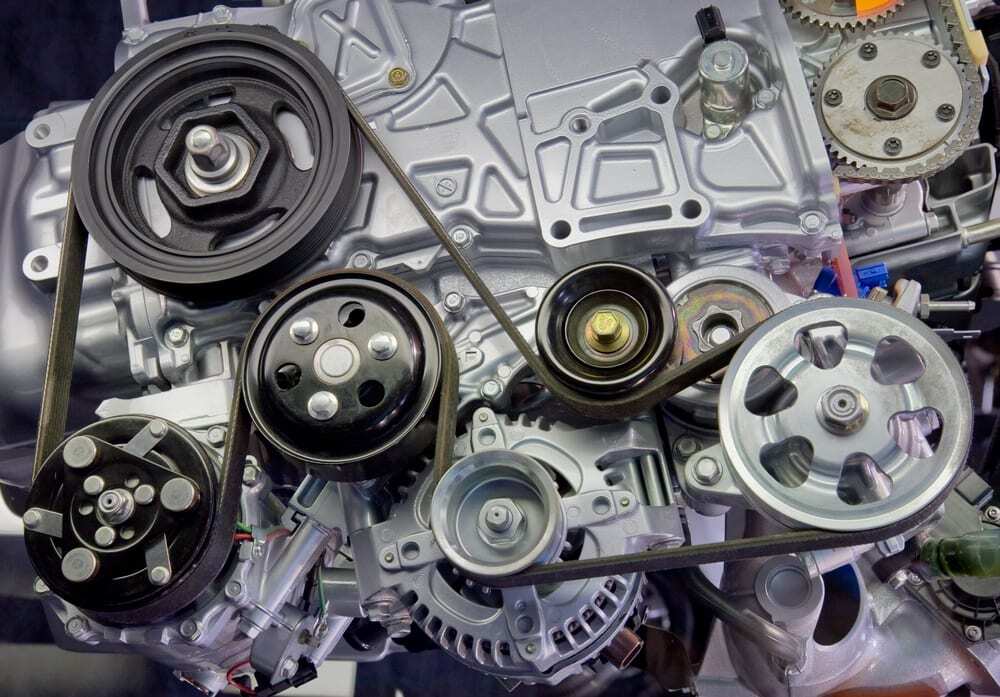Whether you know what a cracked serpentine belt is when you see one or you have no idea what a serpentine belt is at all—cracked or otherwise—just hearing the phrase “cracked serpentine belt” is sure to make any car owner uneasy.
And with good reason! The serpentine belt is a ribbed belt that snakes its way throughout your engine and makes it possible for crucial elements of your car to function. If a car’s serpentine belt breaks, drivers may quickly find themselves in a bad situation.
Learn about the important role your car’s serpentine belt plays in the health of your vehicle and why you should replace a cracked serpentine belt as soon as possible.
What does the serpentine belt do?
Once upon a time, cars required several belts in order to run properly. Today, most modern cars have only one, the serpentine belt, and electric cars don’t have any at all. (Some cars also have a timing belt.)
With the help of other components (an automatic belt tensioner, idler pulleys, etc.) the spinning of the serpentine belt enables all of the following to work:
- The A/C, which keeps Texans from going insane
- The alternator, which charges your car battery and generates electrical power for your headlights, radio, etc.
- Power steering, which makes it easier for you to turn your steering wheel
- The water pump, which circulates coolant so that your engine doesn’t overheat
So, if you’re wondering what happens to a car when the serpentine belt breaks, the answer is quite a lot. Fortunately, serpentine belts are fairly sturdy pieces of equipment. They aren’t prone to breaking, but they can wear out and crack over time, which can lead to issues with any of the above systems.
How long will a cracked serpentine belt last?
Serpentine belts typically last between 60,000 and 100,000 miles (although some claim that they last anywhere between 30,000 to 150,000 miles). Still, that doesn’t mean you should wait until the 100,000-mile mark to check on your belt. We recommend that you have your car’s belt looked at twice a year or, at the very least, once a year during your annual vehicle inspection.
Psst… brushing up on your maintenance tips? These articles can help:
- What is a tie rod on a car?
- Why does a head gasket blow?
- How often do you replace spark plugs?
- How to know if a wheel bearing is bad?
What are the signs of a bad serpentine belt?
Cracked serpentine belt symptoms are typically easy to notice. For example, your car’s battery warning light may come on when your alternator stops charging the battery, or the lack of power steering capabilities will make it hard for you to turn your steering wheel (and fairly impossible for you to drive).
Another common sign of a worn, glazed, or cracked serpentine belt is a sound: squealing. This squealing takes place at low mileages (such as when you start your car) and derives from a buildup of glaze or slippage.
If you’re looking for visual confirmation of a cracked serpentine belt, you can check under the hood. How many cracks are too many? The general rule is if there are three or more cracks within a three-inch section of the belt, then your belt needs replacing.
Note: Keep in mind that this well-known cracked serpentine belt noise can easily be confused for a car air conditioner squealing noise or a variety of other squeaks and squeals.)
Who can replace my cracked serpentine belt?
The skilled car maintenance professionals at Colony One Auto Service can diagnose and replace cracked serpentine belts. If you suspect you have a cracked serpentine belt, are nearing the manufacturer-recommended time to replace your serpentine belt, or you simply haven’t had your car checked out in a while, we can help.
Your car is one of your biggest investments. Put the health and longevity of that investment into the hands of professionals.
Call Colony One Auto Service at 281-800-9209 or contact us online today.
More Helpful Articles by Colony One:

